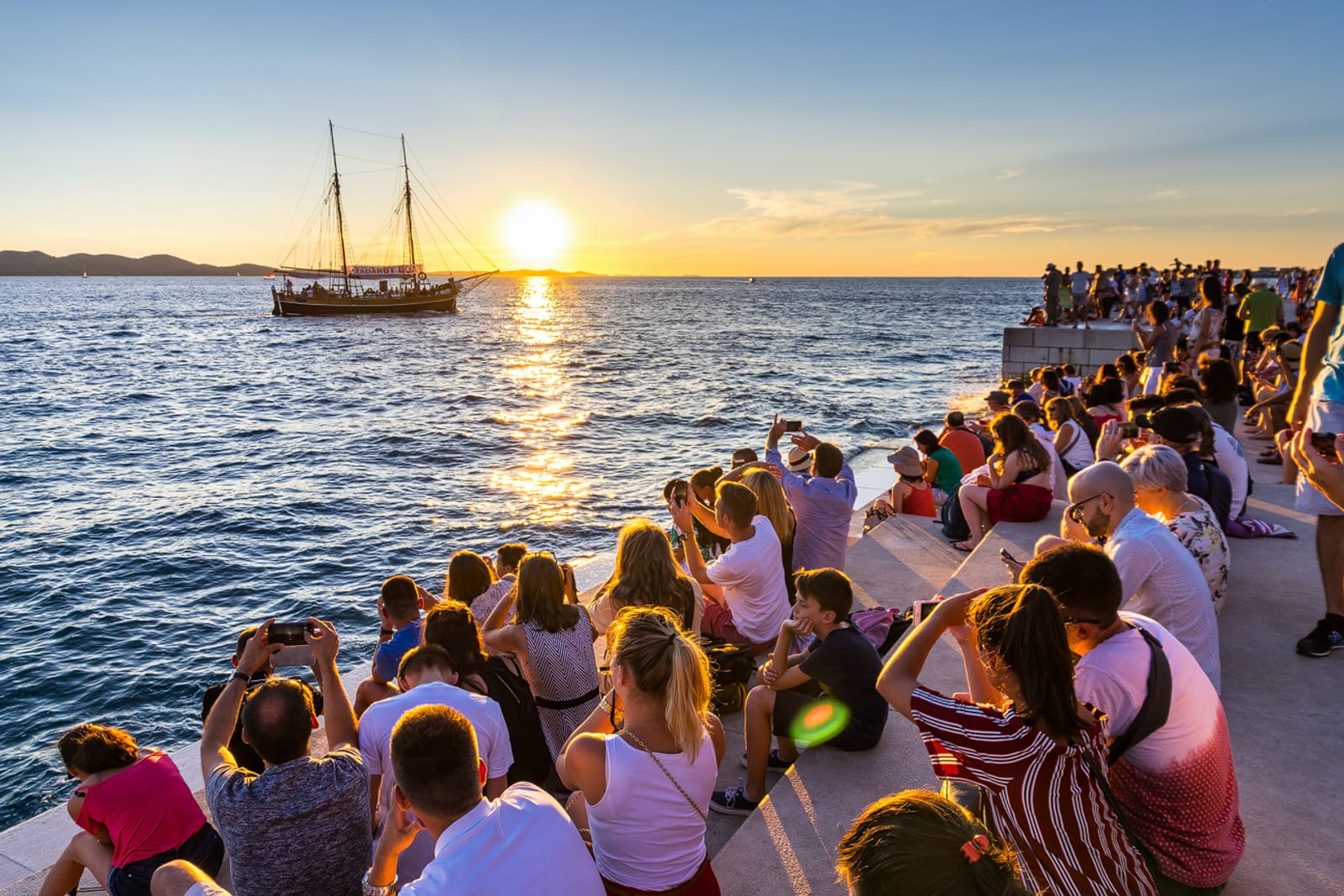
Zadar
About the city
Visit one of the most popular Croatian tourist destinations, a city that enchants with its exceptional beauty, three thousand years of tradition and openness to new art forms that further enrich its appearance. Enjoy the strokes of the barkajoli (local owners of rowing boats) and breathe in the atmosphere of the rowing tradition that has been passed down from generation to generation for eight centuries. Visiting the city of Zadar, every corner reveals a new part of the story of its fascinating history.
Sight
All the characteristics of the city of Zadar during the Roman Empire, such as the strict geometry of Roman urbanism, the forum that was the centre of the city, the capitol with the temple, the emporium or city square, the basilica that was home to the city administration and judiciary, strong defensive walls, public water supply, thermal baths and sewerage system, all this points to a highly developed urban life, and numerous remnants of such life are still visible to this day.
Being the target of numerous attacks in the past, due to its great significance throughout its history, the city of Zadar is guarded by as many as four patron saints, St. Chrysogonus, St. Anastasia, St. Donatus and St. Zoilus. In addition to beautiful Gothic and Renaissance palaces, Zadar is adorned with numerous churches, which stand out with their beauty, monumentality and treasure that they carefully preserve.
One of the symbols of the city of Zadar is the Church of St. Donatus, which is one of the most famous and most valuable monuments of the early Middle Ages in Croatia. Due to its cylindrical appearance, it belongs to the group of the most famous and most important European Pre-Romanesque churches. Although in the 18th century the Church lost its sacral function, it is still the venue for many concerts of medieval and Renaissance music, which have been held there for decades due to the exceptional acoustics of the Church. The Cathedral of St. Anastasia is the largest church in Dalmatia, and its bell tower offers a magnificent view of Zadar and its surroundings. The Church of St. Simeon is home to the powers of the most popular Zadar saint and the Chest of St. Simeon, a magnificent work of Zadar’s medieval goldsmithing.
Apart from the Church of St. Chrysogonus, it is important to mention the Church and the Monastery of St. Mary, which houses the exhibition “Gold and Silver of Zadar” (Zlato i srebro Zadra), a permanent exhibition of church art that represents the invaluable treasure of Zadar’s past, which has been preserved by the Benedictine Sisters, that still take care of it to this day. One should not miss the opportunity to visit the Archaeological Museum, among the most important ones in Croatia, as well as the Museum of Ancient Glass, unique not only in Croatia but also in the world, representing a one of a kind collection of about 2000 different glass objects from ancient times.
The favourite street of Zadar citizens, Kalelarga, leads to the People’s Square, the centre of public life in Zadar from the Renaissance to the present day. The Five Wells Square is also extremely interesting, with five walled wells built in the 16th century during the siege of the Turks. Above the Square rises the oldest park in Croatia. The Square is located near the city walls that go back to the times of the Venetian Republic, when Zadar was its largest fortified city. Today the walls are considered one of the most beautiful Renaissance monuments in Dalmatia, which is certainly supported by the fact that they have been on the UNESCO World Heritage List since 2017.
Beauty of the city and its surrounding
While discovering the charm and beauty of the Port of Foša, one inevitably reaches the waterfront, which offers an impressive view of the Zadar Channel, the islands of Ugljan and Pašman, as well as the open sea. Approaching the other end of the waterfront, the day is magnificently rounded off by the unique beauty of the Zadar sunset, the relaxed melody of the waves of the Sea Organ and the spectacular play of light of The Greeting to the Sun monument, which represents a spectacular blend of nature and art. The proximity of the Vransko Jezero Lake, Bay of Telašćica and Velebit Mountain, as well as nature parks and several national parks, such as Paklenica, Kornati, Northern Velebit, Plitvice Lakes and Krka, positions Zadar at the very top of the tourist offer. The Zadar archipelago, with its idyllic atmosphere and rich marine life, attracts many lovers of nautical tourism and diving. Numerous restaurants and taverns of the city of Zadar prepare autochthonous gourmet delicacies that delight even the most refined palates, and to all lovers of nightlife, Zadar offers a lively club scene.